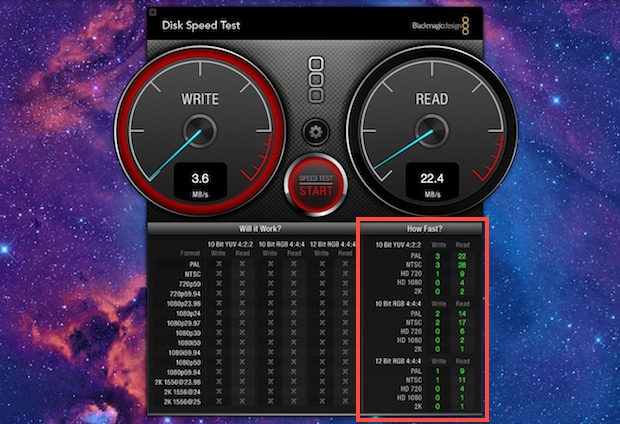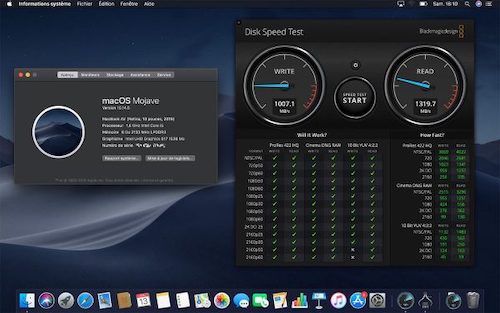Hard Drive Test For Mac
- Ssd Speed Test Mac
- Mac Check Hard Drive Health
- External Hard Drive Speed Test For Mac
- Mac Disk Health
- Hard Drive Stress Test Mac
Hard drive test free download - Free Hard Drive Data Recovery, Apple Hard Drive Update, Apple Hard Drive Update, and many more programs.
Keeping you Mac's hard drive or SSD healthy is hugely important. By monitoring and checking your Mac hard drive's health, you can anticipate potential problems and prevent potentially catastrophic crashes. How do you know if your Mac is working properly?
Fortunately, there are a number of tools available that allow to to check the health of a drive and fix problems before they become serious.
Best Apps to Check Your Mac Hard Drive Health
One of the best apps for alerting you to potential problems is iStat Menus, available in Setapp. Once you've installed it, iStatMenus sits in your Mac's menu bar and monitors not just your hard drive, but its CPU, RAM and network traffic, among other things.
Flash drives (like thumb drives) are external hardware devices that you can add to your Mac for additional storage room or as secure places to back up your data. Here, you see one internal hard drive (the 1TB SATA entry, which is selected) and one USB external hard drive (the Toshiba entry). LaCie Mobile Drive. Backups Made Easy. What is one of the most common uses for an external. Seagate SeaTools. Works from both inside and outside of Windows. Completely free.
iStat Menus, and the other disk monitoring tools available for macOS, monitor what is knows as SMART status. SMART stands for Self-Monitoring, Analysis and Reporting Technology and is installed on most hard drives and SSDs. In order to use it, you need software to analyze and display what it finds, and that's where iStatMenus comes in. Check out how to clone mac hard drive.
Monitoring SMART reports won't prevent your hard drive from failing, but it will reduce the likelihood of problems occurring.
Note: As of 2016, Apple no longer allows software tools to check the SMART status of an SSD. So iStatMenus won't repot anything on Macs shipped in 2016 or later.
There are other steps you can take to keep your hard drive or SSD healthy. CleanMyMac X has a number of maintenance routines. While most of them are designed to keep your Mac running smoothly, one of them is an excellent way to keep your hard drive in good shape.
How to verify Startup disk
- Launch Setapp, search for CleanMyMac, and open it.
- When CleanMyMac has launched, look on the left hand side of its window for the Speed section and click Maintenance.
- Click the check box next to 'Repair Disk Permissions' to verify startup disk and then click the 'Run' button at the bottom of the window.
- Click OK in the dialog box that opens. Click 'Run' again. View the result
Identifying bad sectors with Disk Drill
Sectors are blocks of space on a disk drive and bad sectors are blocks that cannot be read because, for whatever reason, they're damaged. When Disk Drill attempts to recover data from a hard drive that's failed or one where you've mistakenly deleted files, it marks sectors it can't read from as bad. That means that it won't try to recover data from them in the future.
You can't fix bad sectors, the drive's firmware should identify them and prevent them from being written to. If there's data stored in them and you need to recover it, you're out of luck. But by monitoring how many of them there are on a drive, you can keep an eye on its health and decide whether it's time to replace it, if the number of bad sector starts to increase quickly.
Here's how to identify bad sector in Disk Drill:
- Open Disk Drill app in Setapp. When it launches, it will ask if you want to 'Monitor my disks for hardware issues'. Say Yes. If you already have Disk Drill installed but didn't check that option when you launched it the first time, go to the Preferences, click the SMART tab and check the box next to 'Monitor my disks for hardware issues.'
- Start a recovery session. In Disk Drill's main window, select the volume 'Macintosh HD', or whatever you've called your Mac's hard drive. Click Recover. Let the recover session run and complete.
- Check bad sectors. Once the recovery session has completed and saved, go back to the main Disk Drill window. Click the gear icon next to the drive you ran the recovery session on and click the bottom item on the menu 'Specify bad blocks.' This tool is designed to allow you to tell Disk Drill which blocks are bad and you don't want it to scan, but it will also display bad sectors it has identified.
How to avoid problems from an unhealthy hard drive

Ssd Speed Test Mac

You should always backup your hard drive regularly, but it's even more important to do it when you suspect your hard drive is having problems. If you identify problems with a hard drive using any of the steps above, you should consider increasing the frequency of your backups and test them to make sure you can recover data if you need to – a backup routine is useless if you can't restore data. You should also consider using Get BackUp Pro to make a complete clone of the drive, that way, in an emergency you can boot from the clone and be back up and running immediately. Click here to read about how to backup your Mac. Get Backup Pro, also available in Setapp, is an excellent tool for making regular backups.
How to recover from a failed hard drive
If it's already too late and your hard drive has failed and lost data, you should try to recover the data before you do anything else.
These might also interest you:
Mac Check Hard Drive Health
Meantime, prepare for all the awesome things you can do with Setapp.
 Read on
Read onExternal Hard Drive Speed Test For Mac

Mac Disk Health
Sign Up
Hard Drive Stress Test Mac
